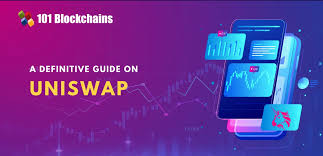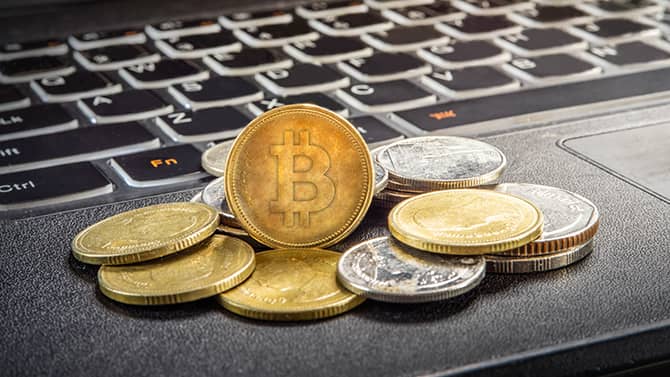Uniswap has become one of the most prominent names in the world of decentralized finance (DeFi), transforming the way users trade cryptocurrencies and assets. As a decentralized exchange (DEX), Uniswap eliminates the need for intermediaries, offering a trustless, peer-to-peer trading platform built on the Ethereum blockchain. By utilizing smart contracts and an automated market maker (AMM) model, it allows users to swap ERC-20 tokens without relying on traditional order books or centralized exchanges. This article explores how uniswap dex works, its key features, and its role in shaping the future of decentralized finance.
What is Uniswap?
Launched in 2018 by Hayden Adams, Uniswap was created to solve some of the major issues plaguing centralized exchanges (CEXs), such as the need for a trusted third party, liquidity problems, and limited access to global markets. By being entirely decentralized, Uniswap allows anyone with an internet connection to trade tokens on the Ethereum blockchain, without the need for permission, a central authority, or complex registration processes.
At its core, Uniswap is powered by smart contracts—self-executing contracts with the terms of the agreement directly written into lines of code. These smart contracts facilitate token swaps, ensure transparency, and protect user funds. The platform is based on the AMM (Automated Market Maker) model, which uses algorithms to set token prices and provide liquidity instead of traditional market makers.
How Does Uniswap Work?
Uniswap operates through liquidity pools, where users can provide their tokens to earn fees and help maintain market efficiency. Here’s how the process works:
- Liquidity Pools: These are collections of two or more tokens that are locked in a smart contract. Users can contribute tokens to a liquidity pool in exchange for liquidity provider (LP) tokens, representing their share of the pool. These pools enable traders to execute swaps without relying on an order book.
- Automated Market Makers (AMMs): AMMs are algorithms that determine the prices of assets within liquidity pools. The most common AMM used by Uniswap is the constant product market maker (CPMM) model. This model maintains a constant product of the quantities of two tokens in the pool. For example, if there are 100 ETH and 1,000 DAI in a pool, the product of 100 ETH * 1,000 DAI will always remain constant, regardless of trades that occur. This ensures that liquidity remains balanced even during high volumes of trading activity.
- Swapping Tokens: Users can trade one token for another directly from the liquidity pools. The price of the tokens is determined based on the ratio of tokens in the pool, with each trade adjusting the ratio and, in turn, the price. The more tokens you trade, the greater the impact on the price.
- Fees and Incentives: Every time a swap occurs, Uniswap charges a small transaction fee (usually around 0.3%), which is distributed among liquidity providers based on their share of the pool. This incentivizes users to provide liquidity, ensuring the platform remains liquid and efficient for all users.
Key Features of Uniswap
- Decentralization: Uniswap is fully decentralized, meaning there is no single entity controlling the platform. All trades are facilitated by smart contracts, and no personal information is required for participation. This removes many barriers to entry and enhances privacy and security for users.
- Permissionless: Anyone with an Ethereum wallet can participate in Uniswap without needing approval from a central authority. This makes it easier for individuals, developers, and even businesses to access decentralized financial services.
- Liquidity Pools: Instead of relying on centralized market makers, Uniswap users can supply liquidity by adding their tokens to liquidity pools. These users earn a share of transaction fees, creating a passive income stream.
- Token Swaps: Uniswap allows users to trade any ERC-20 token directly with one another. Traders do not need to rely on an order book or wait for a match with another buyer or seller. Uniswap provides an efficient and seamless way to swap assets with minimal friction.
- Interoperability: Uniswap’s integration with Ethereum ensures that it can connect to a wide range of other DeFi platforms and applications, from lending protocols to yield farming platforms. Its compatibility with the Ethereum ecosystem is one of its strongest selling points, enabling it to tap into a vast network of decentralized projects.
Uniswap’s Impact on DeFi
Uniswap has been one of the key players in driving the DeFi movement forward. Its protocol has been a catalyst for the development of other decentralized applications (dApps), and its liquidity model has inspired many similar platforms.
- Boosting DeFi Accessibility: Uniswap has made decentralized trading accessible to everyone. It has broken down the barriers that once existed in traditional finance, allowing anyone to trade freely, without needing to trust an exchange or middleman.
- Pioneering Yield Farming: Liquidity providers on Uniswap earn transaction fees, but they also benefit from yield farming. By locking up tokens in a pool, liquidity providers can earn rewards in the form of additional tokens or governance rights, depending on the protocol. This has opened up new opportunities for passive income within the DeFi ecosystem.
- Governance: Uniswap introduced its native governance token, UNI, in 2020. UNI holders can vote on changes to the protocol, allowing the community to have a direct say in the platform’s future. This has further reinforced Uniswap’s commitment to decentralization and democratized governance.
- Uniswap V3: The release of Uniswap V3 in May 2021 marked a significant upgrade to the platform, bringing enhanced capital efficiency and more flexible liquidity provision options. Users can now provide liquidity to a specific price range rather than the entire spectrum, allowing them to earn higher fees with less capital. Uniswap V3 also introduced concentrated liquidity, which enables liquidity providers to deploy capital more efficiently, resulting in lower slippage and higher returns.
Challenges and Criticisms
While Uniswap has revolutionized the DeFi space, it is not without its challenges. One of the most significant concerns is high gas fees on the Ethereum network. When the network becomes congested, transaction costs can skyrocket, making trading on Uniswap expensive. This has led to the development of Layer 2 solutions like Optimism and Arbitrum, which aim to alleviate congestion and reduce transaction costs.
Additionally, Uniswap faces competition from other DEXs like SushiSwap, Curve Finance, and PancakeSwap, which offer similar features but on different blockchains or with slightly modified protocols.
Conclusion
Uniswap has undoubtedly changed the landscape of decentralized finance, enabling seamless, trustless, and permissionless trading on the Ethereum blockchain. Its pioneering work with automated market makers, liquidity pools, and governance tokens has provided a foundation for the DeFi ecosystem to grow and evolve. As the platform continues to innovate with updates like Uniswap V3 and the potential for cross-chain compatibility, it will remain a crucial player in the decentralized financial revolution. Despite the challenges, Uniswap’s continued success showcases the power and potential of decentralized platforms to disrupt traditional financial systems.





